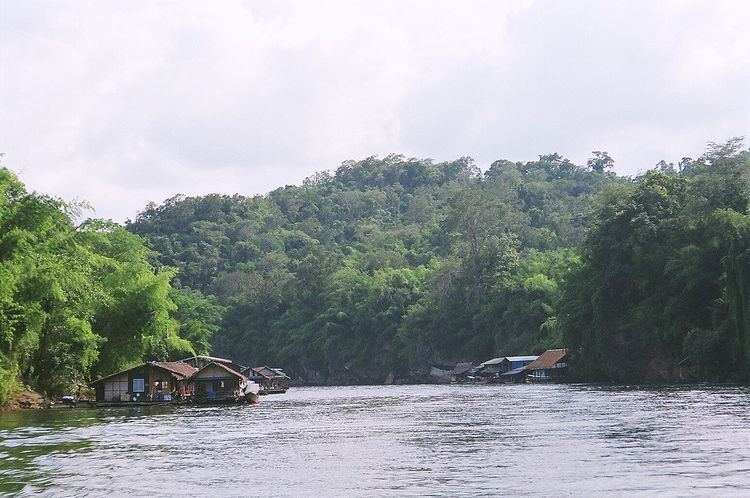Phone +66 86 700 7442 | Area 500 km² Established October 1980 | |
 | ||
Address Sai Yok District, Kanchanaburi, Thailand Hours Open today · 7AM–5PMTuesday7AM–5PMWednesday7AM–5PMThursday7AM–5PMFriday7AM–5PMSaturday7AM–5PMSunday7AM–5PMMonday7AM–5PMSuggest an edit | ||
Sai yok national park
Sai Yok National Park (Thai: อุทยานแห่งชาติไทรโยค) is a national park in Sai Yok district, Kanchanaburi Province, Thailand. The park, home to mountains, waterfalls and caves, is part of the Western Forest Complex protected area.
Contents
- Sai yok national park
- Sai yok national park thailand
- Geography
- Climate
- History
- Attractions
- Flora and fauna
- References
Sai yok national park thailand
Geography
Sai Yok National Park is in the Tenasserim Hills mountain chain, 100 kilometres (62 mi) northwest of Kanchanaburi town. The park's area is 500 square kilometres (190 sq mi). The Khwae Noi river ("River Kwai") runs through the park.
Climate
Temperatures in the park area have a wide annual range from 8 °C (46 °F) to 45 °C (113 °F). The driest time of the year here is from December to February, while the rainiest time is from May to October.
History
Within the park are remains of a bridge on the Burma Railway and also of a camp used by Japanese troops during World War II.
In 1978, the Russian roulette scenes of the film The Deer Hunter were filmed in the park.
On 27 October 1980, Sai Yok became Thailand's 11th national park.
Attractions
The park's major attractions are its waterfalls, including Sai Yok Yai waterfall which flows into the Khwae Noi river. The waterfall is near a rope suspension bridge across the river. Sai Yok Yai Lek waterfall lies 500 metres (1,600 ft) south of Sai Yok Yai along the Khwae Noi.
The park also contains numerous caves, the largest of which is Tham Lawa with a length of 500 metres (1,600 ft). This cave complex consists of five large caverns, each containing large stalactites and stalagmites. Another cave system, Tham Daowadung, is 100 metres (330 ft) long and was discovered in 1972. Tham Daowadung consists of eight chambers of stalactites and stalagmites.
Flora and fauna
Sai Yok's forest is primarily teak forest. During the Japanese occupation of Thailand, teak trees were felled for use as railway sleepers on the Burma Railway. The teak forest was replanted in 1954.
Animal species include tiger, barking deer, sambar deer, wild pig, gibbon, Malayan porcupine, slow loris and serow. Wild elephants, whose range extends into neighbouring Burma, are also found in the park. A species of queen crab—coloured red, white and blue—was discovered in the park in 1983.
Sai Yok is home to Kitti's hog-nosed bat, a rare bat species considered to be the world's smallest mammal (weighing around 2 grams). The bat was first spotted in 1973 and is found only in some limestone caves of the park and surrounding areas in Kanchanaburi Province and nearby Burma.
